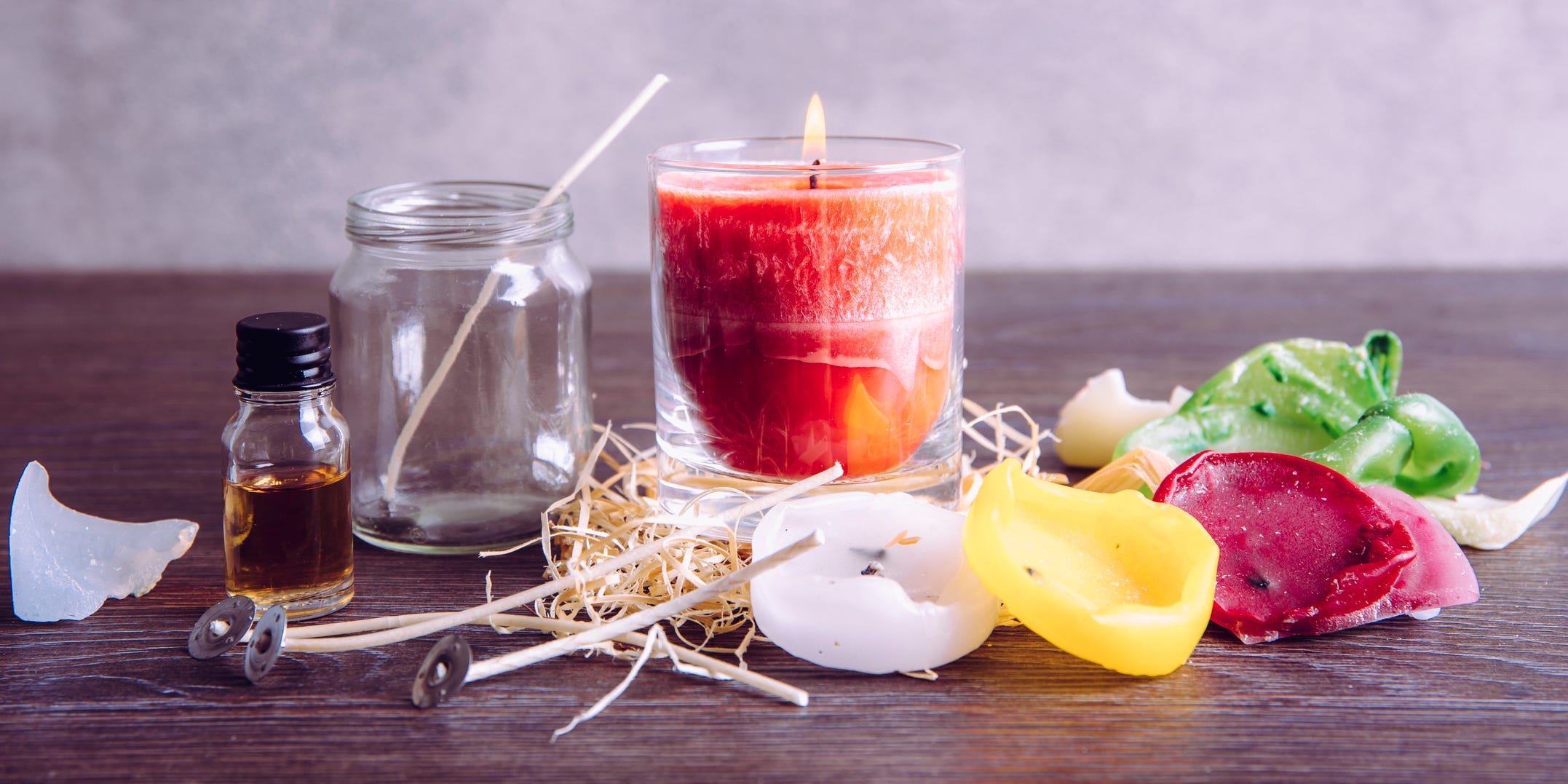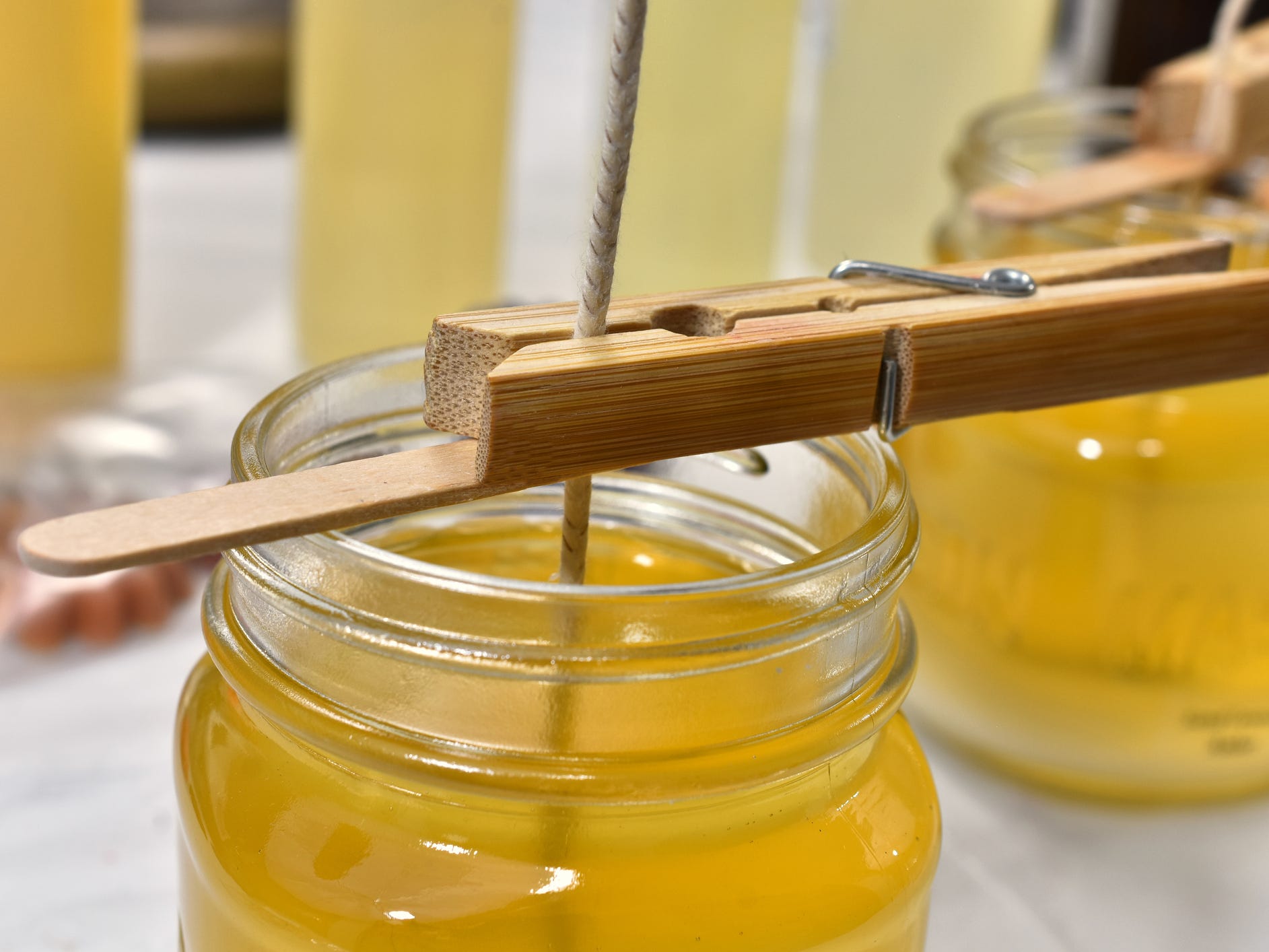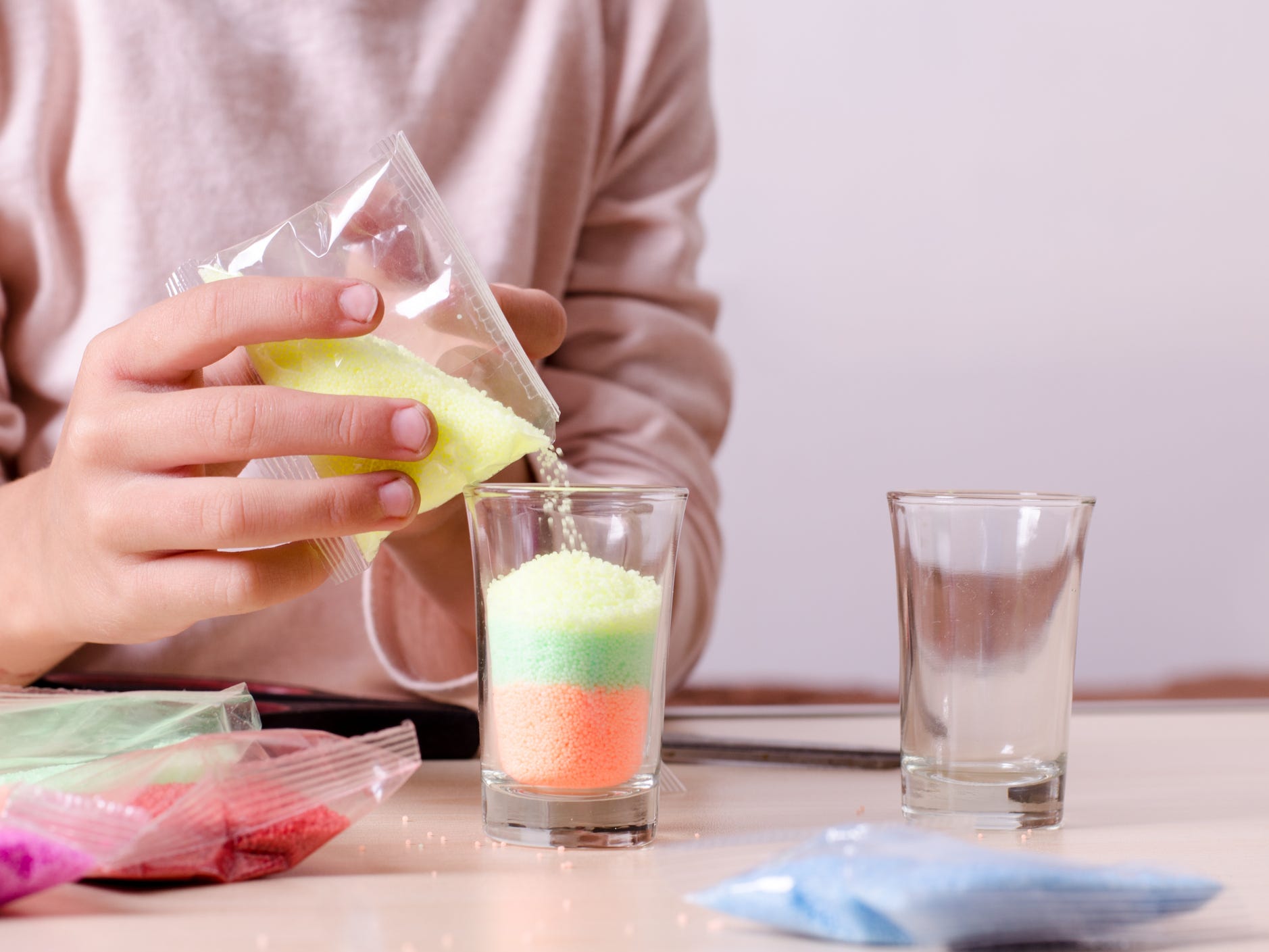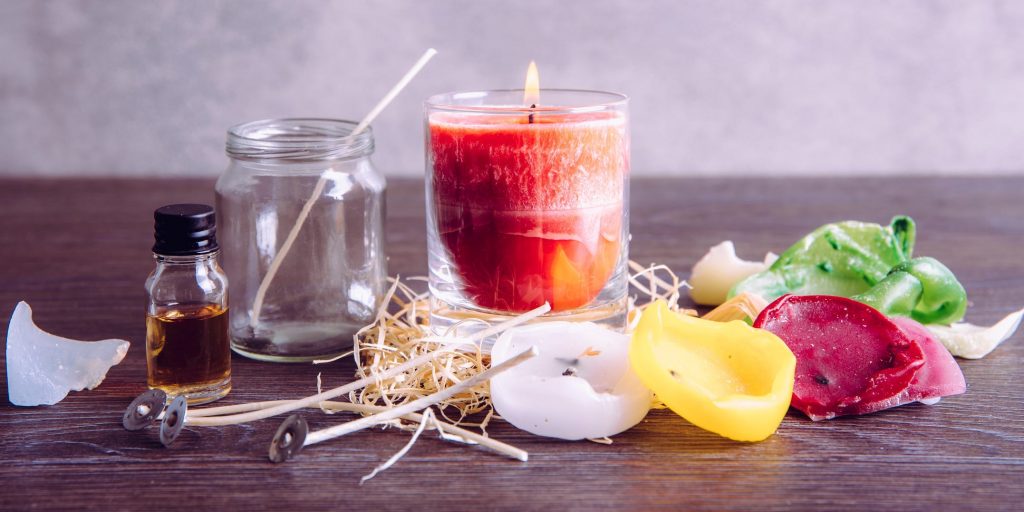
Helin Loik-Tomson/Getty Images
- Whether you're melting down old candles or starting with fresh wax, candle-making is easy.
- Essential oils are the purest form of fragrance for candles, but fragrance oils smell stronger.
- Soy wax, coconut wax, and beeswax are the safest and cleanest types of wax to burn.
- Visit Insider's Home & Kitchen Reference library for more stories.
New hobbies are always a refreshing idea if you're bored of the same-old. If you're looking to try a fun and accessible activity, candle-making is calling your name. Not only is it a fun craft for a rainy day but it's also a clever way to upcycle used containers, breathe new life into old candles, and freshen up your decor.
While it is the perfect DIY project, it certainly takes practice to perfect. Read on for everything you need to know about how to make candles, according to candle-making experts Ab Gibson and Al Rose, founders of Queer Candle Co., and Paige Graham, founder of Paige's Candle Co.
How to choose the right wax
| Wax type | Notes | Temperature to add fragrance | Fragrance amount |
Cure time |
| Soy wax | Natural, vegan | 185°F | 1 ounce per pound of wax | Seven days |
| Coconut wax | Natural, vegan | 185°F | 1-1.5 ounces per pound of wax | Three to seven days |
| Beeswax | Natural | 160-165°F | 1-2 ounces per pound of wax | Three to seven days |
| Paraffin | Synthetic, lots of soot | 185°F | Up to 1 ounce per pound of wax | One to two days |
Gibson and Rose recommend using one of the natural waxes – soy wax, coconut wax, or beeswax. Paraffin, a synthetic wax that produces a lot of soot and is often used by many large candle companies, "releases the same toxins found in diesel fuel," they say.
Aside from the toxins, Graham also adds that paraffin produces lots of soot, while soy wax produces 90% less soot, and beeswax burns clean.
How to choose the right wick size

PamWalker68/Getty Images
As a rule of thumb, wider candle containers mean wider wicks. The candle makers explain that this is because you want the candle to burn evenly all the way down without tunneling - that phenomenon where only the center of the candle burns down, leaving you with high walls of wax around the edges. If the wick is too thick, though, your flame may end up being uncontrollable or your candle will burn out rapidly.
If you are new to candle-making, don't guesstimate. Use this wick guide for the most accurate wick size suggestion based on your wax type and container size.
How to choose a fragrance
While you may think choosing a scent is strictly preferential, Gibson and Rose emphasize the importance of paying attention to the type of oil you are using and its ingredients.
"Essential oils are the purest form of scent oil, but they will not emit a particularly strong smell in a candle," they share. For a stronger smell, opt for fragrance oils, which are better for smell but are not considered as "pure," so it's important to pay attention to the ingredients to ensure they are regulated and non-toxic.
Tips for making your candles unique

Sckrepka/Getty Images
- Have fun with your containers. Consider reusing old candle vessels, thrifted vases, mason jars, or even old mugs.
- Layer colored waxes. Pour one color and let it set before adding another color for a striped effect or gently swirl them together for a tie-dye look.
- Add crushed flowers. Earthy elements are not only visually lovely but they can really kick the scent up a notch, too.
- Add crystals. If healing energies are your thing, try arranging crystals on top of milky wax in the vessel before it hardens. Your candle will refract the flame's light in fun ways and release different positive energies with every burn.
- Sprinkle some glitter. Play up the sparkle with some glistening embellishments but be sure to use fine glitter that is heat resistant and nonflammable, not paper or plastic glitter.
- Decorate with shells. Incorporate memories of your favorite beach vacations to make it a little more sentimental.
Insider's takeaway
Although candle-making is a pretty simple process, there's a science to choosing the right materials (and ingredients), measuring, monitoring the temperature, mixing, and then some. Be sure to allow yourself ample time to complete each step - and don't rush to use your candle before it's fully cured - and the results will light up your home.
